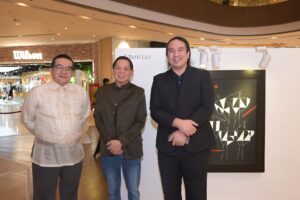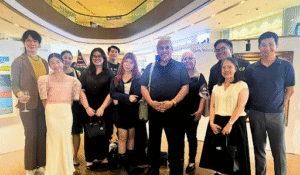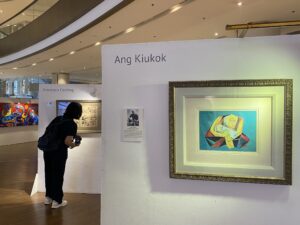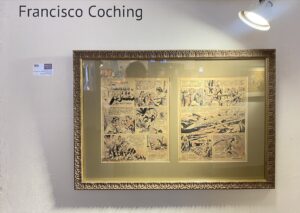By Ms. Mairene Leynes, College of Arts and Sciences
Following the opening of In the Shadow of Great Light: An Exhibition of Works by Philippine National Artists at Stephanie Gallery, important conversations have emerged—conversations that point us not only to the challenges but also to the opportunities in art education and cultural policy in the Philippines.
At the exhibit opening, curator Ricky Francisco raised a striking truth: many Filipino students have limited access to our own artistic treasures and are unable to decode the values they embody. “Quite a number of students I have spoken with do not know who our National Artists are, or why The Spoliarium is important,” Francisco recounted. “A number of college students I spoke to even mistook Juan Luna as the first Philippine president!” While this may sound discouraging, it also opens a door for reflection and action. This gap is not just about physical distance from museums and galleries, but about how we design and deliver arts education in schools.


This anecdote reveals how urgently we need to strengthen art learning across basic education. Yet instead of dwelling on what is missing, we can begin to imagine what is possible: a curriculum that nurtures art appreciation from kindergarten to Grade 10, led by well-prepared teachers who are equipped to guide students into both the history and meaning of our cultural works.
This vision will require collective effort. Teacher training programs must expand to include stronger foundations in art history and pedagogy. Schools, meanwhile, can reimagine access by developing safe and manageable pathways for students to engage with cultural heritage—whether through museum partnerships, guided digital experiences, or carefully planned field visits that address safety and administrative concerns.
Beyond the classroom, the exhibit conversations turned toward broader cultural policy. Lawyer Eileen Aguila highlighted the importance of strengthening protections for artists, conservators, heritage works, and cultural sites. Such frameworks not only safeguard our heritage but also ensure that creative professionals can thrive in their practice.


Most importantly, the dialogue underscored the need to see culture not as separate from economic development, but as a dynamic force within it. Many countries, like South Korea, have shown how cultural industries can enrich both identity and economy. The Philippines has the same potential—if we can embrace the idea that culture is both intrinsically valuable and economically viable. Far from diminishing its worth, recognizing the economic dimension of culture can provide the very support needed to sustain its preservation.
This is where collaboration becomes essential. Educational institutions, policymakers, and cultural advocates have the opportunity—and responsibility—to work together:
- Curriculum reform by developing comprehensive art education programs and equipping teachers with the right training.
- Access innovation through safe and creative ways for students to engage with heritage and the arts.
- Policy development that protects cultural workers, conserves heritage, and integrates culture into national economic strategies.
- Mindset shift that views culture as a shared resource—cherished for its beauty and history, and sustained through responsible economic engagement.
The academe and the art community are uniquely positioned to bridge these gaps through research, advocacy, and innovative programming. By working together, we can ensure that the next generation of Filipinos not only recognizes the works of our Filipino artists but also understands their relevance to our shared identity and future.
The conversations sparked by In the Shadow of Great Light remind us that art education is more than an academic subject—it is a way of stewarding our story. Let us continue this dialogue within our academic community and beyond, confident that with shared effort, we can shape an arts and cultural policy that both preserves and propels our heritage into the future.#
Banner photo courtesy of Galerie Stephanie.
Leave a Reply